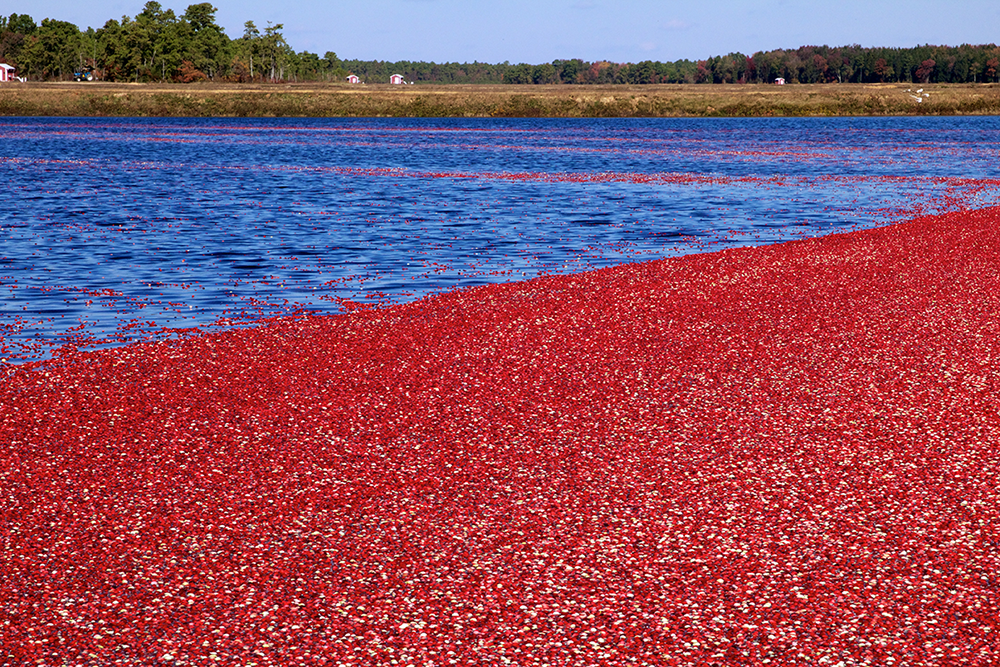
Do Cranberries Really Grow in Water?
Often thought of only as an ingredient on holiday menus, cranberries have a long and colorful history and was an incredibly important food source for the early Native American Tribes.
However, the cranberry was not only used for food, they were also used as a textile dye, hunting bait, herbal medicine, and the leaves were also used as a tobacco substitute. Packed with antioxidants and a natural acidity, cranberries were the perfect ingredient for the world’s first energy bar, pemmican.
Native Americans would pound the cranberries with dried venison and tallow and store the mixture in animal hide bags to serve as a food source to carry them through the harsh winter months. Early European settlers in America quickly adopted, making it a vital part of their cuisine. In fact, American whalers and mariners kept a supply of cranberries on board to fight the dreaded affliction known as scurvy.

So when did cranberries become a commercial crop?
In 1816, Captain Henry Hall happened upon a cranberry vine growing vigorously in some sand while on Cape Cod, he decided to plant a bog. The true turning point for the cranberry came in 1912 when Attorney Marcus L. Urann had an idea to can the cranberries. This was a transformative innovation, as it made cranberries available in some form year round. With the success and growth of his company, Urann decided to rebrand it in 1930, renaming it the Cranberry Products Company, and along with three other growers, formed the cooperative that is now known world-wide. In 1957, the named changed to the now familiar Ocean Spray.
Do cranberries really grow in water?
The short answer is no. They don’t grow in water, but water does come in to play with their harvest. Cranberries actually thrive in what known as a bog, or an area is characterized by an acidic peat soil. The confusion comes from the harvesting method, also known as the “wet method.” The cranberry has four air pockets that allow the berries to float to the surface when the bog is flooded and they are cut from their vines. Once they are cut, they are then corralled and removed from the water via suction, as seen here. However, the wet method is used primarily for berries that are meant for further processing, such as juice production or to make the beloved canned cranberry sauce.
Fresh cranberries are harvested using what is known as the “dry method,” which is exactly as it sounds. The bog isn’t flooded, but rather, is mechanically harvested and not as efficient, but the berries experience less damage.
So what does the future bring?
There are currently over 100 varieties of cranberries grown commercially in the United States. One variety in particular may hold the secret of success for the American industry. The Sweetie variety, developed by the University of Wisconsin – Madison, is a naturally variety that can actually be eaten fresh and enjoyed as an out of hand snack.
It is just not the holidays without the tangy zip of cranberry sauce. The tartness of fresh cranberries works well with everything. Extend the season of cranberries by stashing bags in your freezer, they hold up well and turn out the same after cooking.
In season now*, call and add a case of cranberries to your next order.
*Fresh cranberries are generally available from early October through December. Contact your Marketing Associate about availability and adding some to your next order. If you are not a customer, find out how to become one today!
Article submission by Chef Daniel Snowden, the Director of Culinary Development for FreshPoint Central Florida. He has been in the produce industry years almost 20 years and loves getting geeky about food. Follow FreshPoint Central Florida on Facebook and Instagram.
Some tools you can use:
Visit freshpoint.com for our seasonal availability guides—and while you are there, check out the FreshPress, our latest market report. Place your orders online with ease at myfreshpoint.com. Did you know you can receive real-time reliable delivery alerts on the day of your delivery? Activate and subscribe at FreshPoint.com/mydelivery
Download our app and take your produce management on the go. Place orders, review flyers, watch videos…all in one spot!
Find out more details about our UBU program, and how we are shining a spotlight on food waste while making value and food safety a priority.
We buy local to strengthen regional economies, support family farms, preserve the local landscape, and to provide fresh-from-the-farm food to our customers. Local.freshpoint.com connects you to your local farmers like never before! Customize your search by zip, city, state, radius…even by crops and growing methods. Pop in your zip code and learn about our local farmers.
Socialize with us!
Did you know we are on YouTube? Head over to our page and check out our 75+ videos. Don’t forget to subscribe, and also be a part of our Bell Team—hit the little bell icon to get notifications when we upload new videos.
Follow FreshPoint, Inc. on Facebook, Twitter, Instagram, and LinkedIn…and follow The Produce Hunter on Instagram as she finds the best specialty produce at the Santa Monica Farmers Market.

